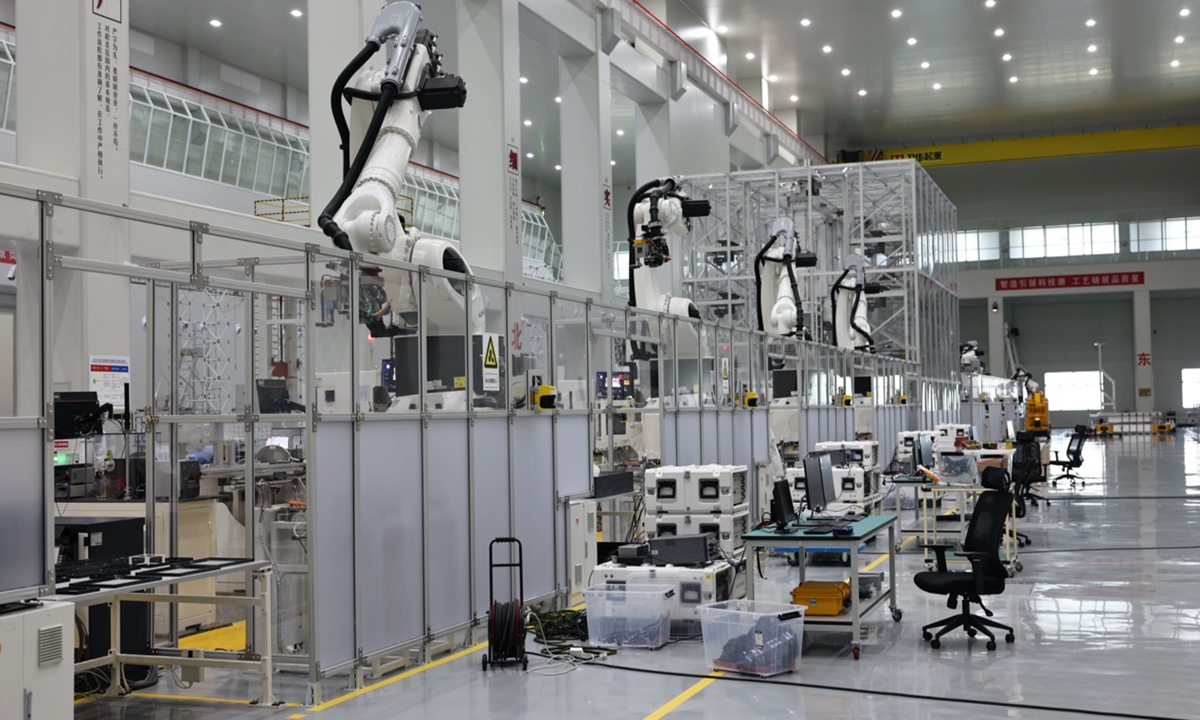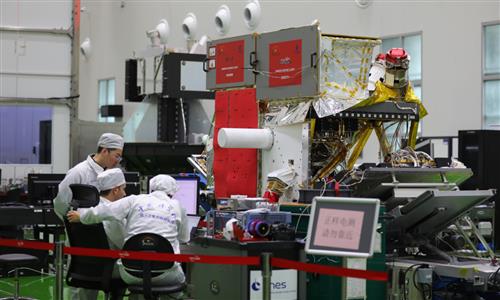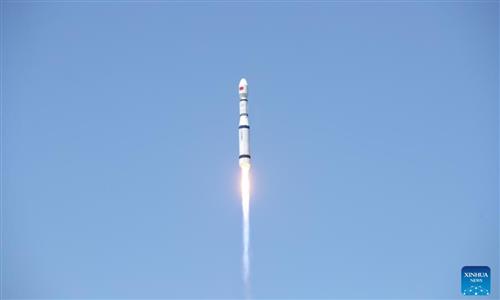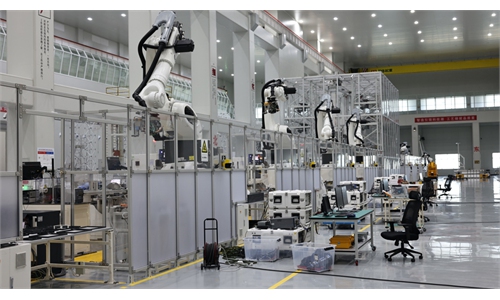State-owned aerospace giant to build 300-satellite constellation at Very Low Earth Orbit by 2030 for better, more economic remote sensing services

Intelligent satellite manufacturing line in Wuhan National Aerospace Industry Base Photo: Deng Xiaoci/GT
China unveiled plans to build a new satellite constellation at the Very Low Earth Orbit (VLEO) that would comprise 300 satellites orbiting the globe by 2030 and provide ultra-fast remote sensing and communication services, with the first satellite to be launched December this year , the Global Times learned from developers on Wednesday.
The Second Academy of the China Aerospace Science and Industry Corp (CASIC), a state-owned space contractor, announced its ambitious plan at the opening day of the Ninth China (International) Commercial Aerospace Forum (9th CCAF) in Wuhan, Central China's Hubei Province on Wednesday.
The VLEO refers to orbits that are below 300 kilometers, compared with traditional satellite orbits, the dynamic environment of the VLEO is more complex so that it requires to offset the impact of the rapid decay of satellite orbital heights due to higher atmospheric resistance.
Although the long-term operation of ultra-low orbit will face many technical challenges, it also offers unique value, including lower costs and higher observation resolution achieved by changing from "remote sensing" to "near observation" due to the decrease of orbital, shorter transmission delay, among other benefits, according to Zhang Nan, the chief designer of the CAISC program.
VLEO technology could help reduce the weight and cost of optical payloads by 50 percent while providing the same resolution and reducing the weight and cost of Synthetic Aperture Radar (SAR) payloads by 40 percent. The resolution of VLEO sensing services could reach up to half of a meter, Zhang told the Global Times.
According to the overall plan released by the developer, the construction of the new VLEO constellation will be carried out in three phases.
At the technology and service verification stage, the first satellite of the constellation will be launched by December 2023. By 2024, nine more satellites will be launched, and together form a satellite data public service platform, to demonstrate the system's capability to commercial users.
By 2030, there will be 300 VLEO satellites making up the constellation, forming an ultrafast global responding capability within 15 minutes and that could be further improved to 10 minutes when the construction is fully completed at the integration and development stage after 2030.
Currently, the first prototype satellite for the constellation has already emerged from the design and production phase. It is equipped with payloads such as optical remote sensing cameras, on-board intelligent processing equipment, and atomic oxygen detectors, Zhang explained.
To illustrate the increased efficiency of VLEO satellites in their remote sensing and communication functions, the developer detailed its application scenarios, such as supporting emergency rescue and disaster relief.
The satellite platform could provide disaster monitoring and early warning to facilitate the rescue and disaster relief command with fast capture of on-site images of a given disaster area within 15 minutes.
Once an emergency event occurs, it can capture and extract key information thanks to their inter-satellite transmission and intelligent processing capabilities, sending critical data through an independent network to terminals on Earth which could include a moving vehicle or portable devices.
Themed Constructing a Modern Commercial Aerospace Industry System: Innovation and Leadership, the two-day 9th CCAF kicked off on Wednesday in Wuhan, a city home to China's Wuhan National Aerospace Industry Base. Representatives and officials with aerospace agencies from 15 countries attended the event this year and will deliver their key note speech at side conferences, including those from Mexico, Tukey, Egypt, and Thailand.




